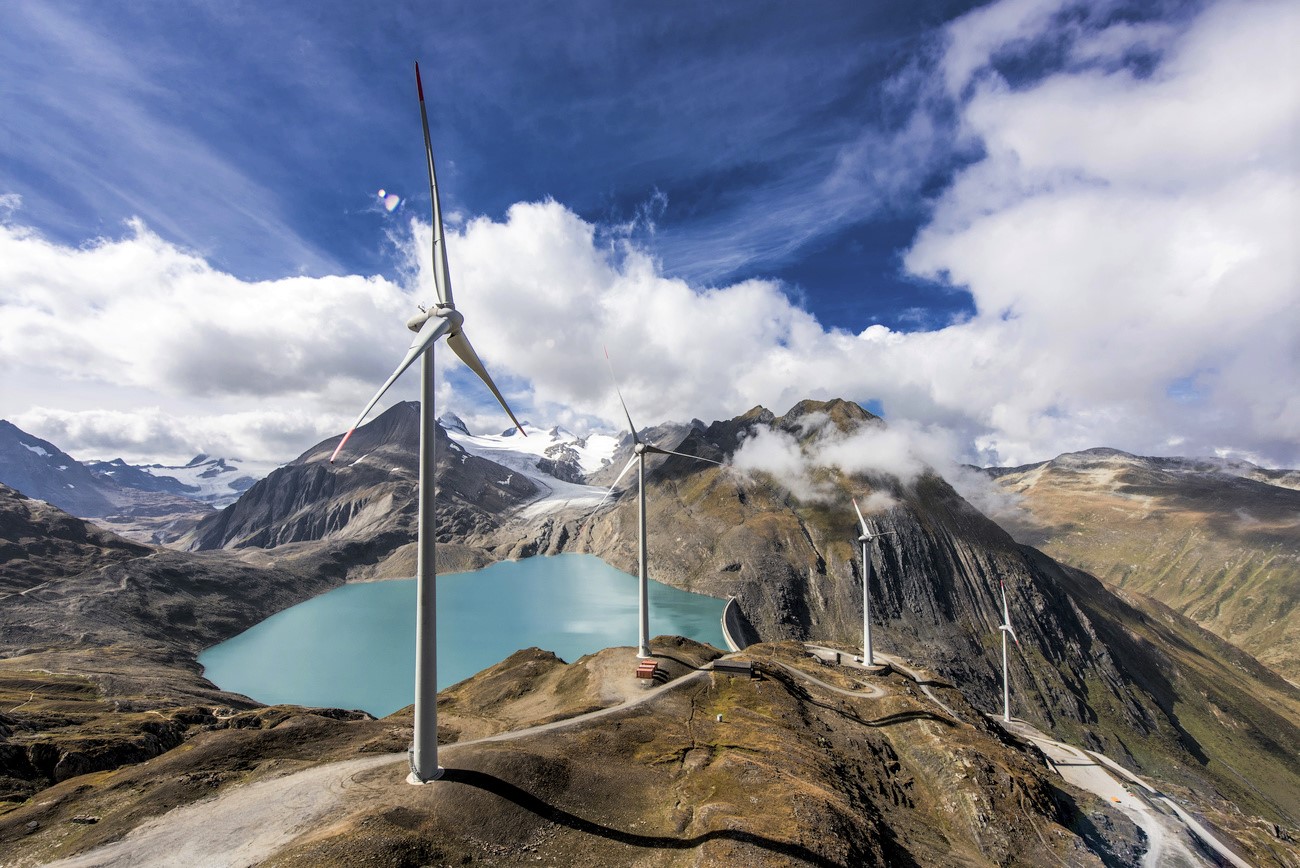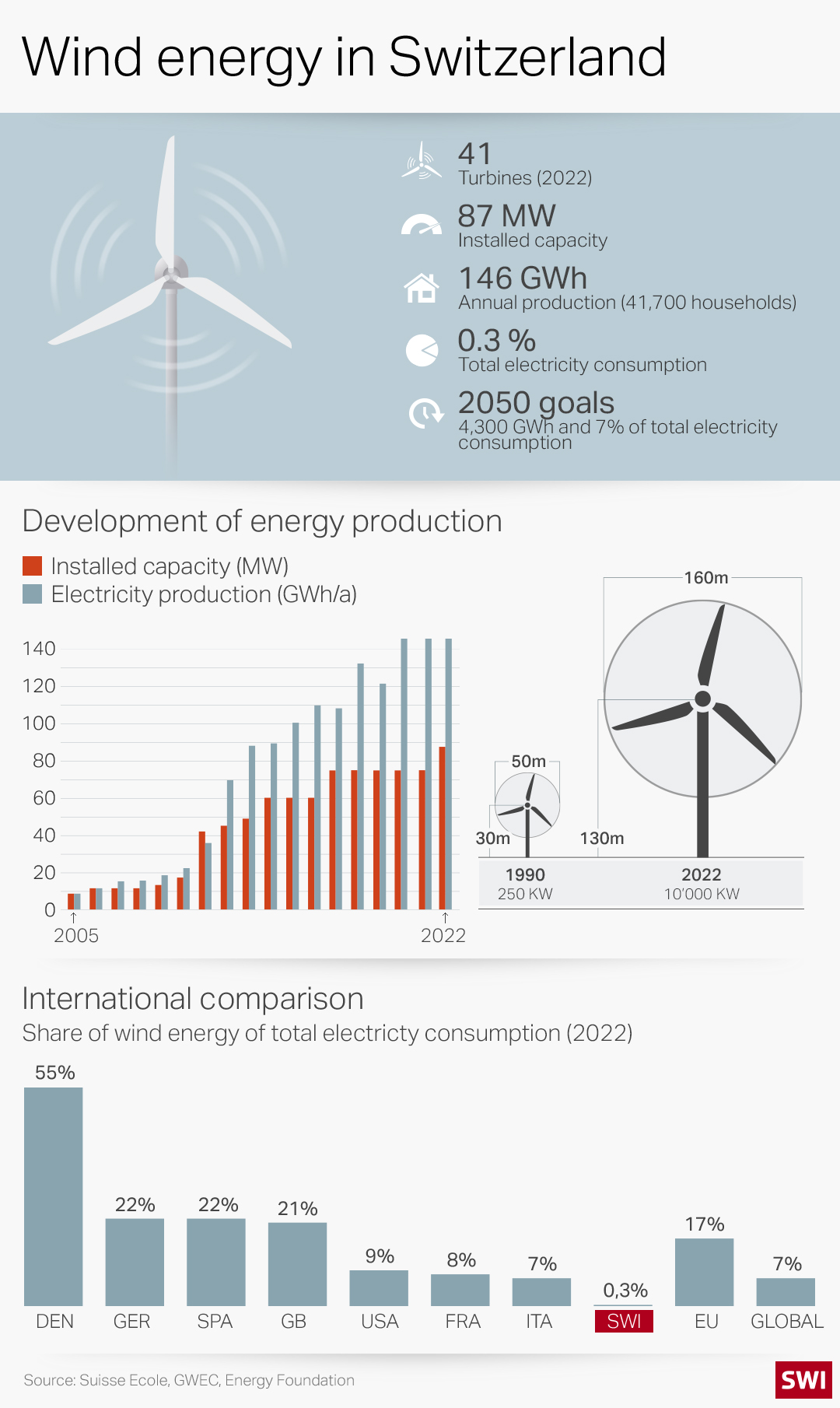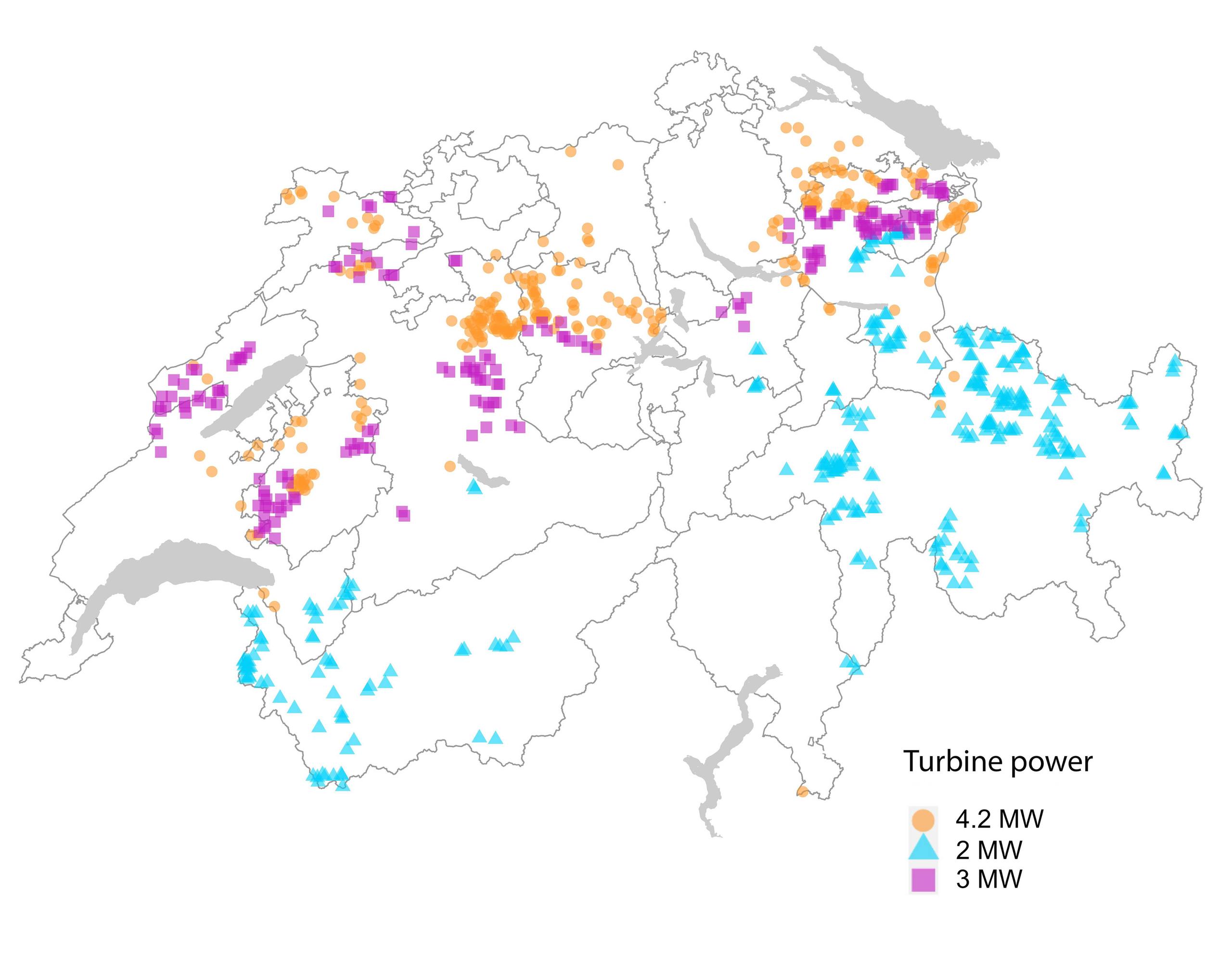
Will the Swiss countryside soon be dotted with wind turbines?

Switzerland would need around 760 wind turbines to meet the government’s 2050 energy target. A lower number would do the job, a recent study has found – but only if they could be built on valuable farming land.
Renewable energy sources are steadily on the rise. In 2022, wind and solar power generated 22% of EU electricityExternal link, overtaking fossil gas (20%) for the first time. Wind accounted for around 17% of electricity production.
Swiss wind power also set a new record in 2022, generating 5% more electricity than the previous year, according to the association Suisse EoleExternal link. But the country still has a long way to go if it is to meet its targets.
Switzerland currently has 41 operating wind turbines, which produce around 0.15 terawatt-hours (TWh) a year – this represents 0.3% of electricity consumption. The Swiss Energy Strategy for 2050, meanwhile, aims to increase production to 4.3 TWh a year, to generate around 7% of electricity. So how can this be achieved?

300 wind turbines in the Alps
A new studyExternal link by the federal technology institute ETH Zurich has concluded that, in order to reach its 2050 target, Switzerland would need 760 wind turbines. This is nearly 20 times the current number.
The study also pinpointed which geographic areas would be most suitable for them. Around 300 turbines would need to be erected in the mountains of cantons Valais and Graubünden, 260 in the lowlands of the central Swiss Plateau region and the remainder in the foothills of the Alps.
The ETH Zurich researchers based their analysis on the current state of legislation, which prohibits the construction of wind turbines in forests or agricultural crop rotation areas. They also considered the fact that turbines in lowland areas can be taller and more powerful than those at higher altitudes.

Wind turbines on farming land
Fewer wind turbines could suffice but land-use regulations would have to be eased, the study argues.
If the particularly windy crop rotation areas of the central Plateau region could be used, Switzerland would only need around 460 wind turbines, the researchers found. This land accounts for about 40% of the country’s utilised agricultural area.
By making use of this high-quality lowland terrain, “we would need to build significantly fewer wind turbines in Alpine areas”, said Adrienne Grêt-Regamex, professor of landscape and environmental planning at ETH Zurich and co-author of the study, in a press release.
The cost of constructing and erecting wind turbines tends to be higher in the mountains than in the plains, she added. Moreover, “the Swiss population finds wind turbines in pristine Alpine landscapes particularly disturbing”.
What does the farming community think?
The Swiss agricultural sector is open to the idea of producing wind energy on land considered essential for food security.
“The pressure on these key areas is already very strong. However, as wind power is an important supplement to the electricity mix and wind turbines occupy only a small surface area, some projects could made sense,” wrote Hannah von Ballmoos-Hofer, head of energy and environment in the Swiss Farmers’ Union, in an e-mailed reply to SWI swissinfo.ch. Each proposal would nonetheless have to be assessed on a case-by-case basis, she added.
According to Ballmoos-Hofer, the farming community is willing to contribute to energy production. But if wind power sites were set up on farming land, the farmers would have to “receive appropriate compensation”.
The environmental scientist Grêt-Regamex put the dilemma in a nutshell. If the Swiss population wants as few wind turbines as possible, both overall and in the Alps, then large and visible plants will have to be built where the wind is strongest. “If, on the other hand, we give priority to protecting crop rotation areas, we will have no choice but to expand into the Alps,” she noted.
Wind power is struggling to take off in Switzerland. The country does not have such vast, uninhabited flat areas as neighbouring Germany, for instance. Moreover, building wind power sites in the Alps is controversial, and environmental and landscape protection associations oppose projects in unspoilt mountain regions. Much of the Swiss population shares this view, according to a surveyExternal link by the Swiss Federal Institute for Forest, Snow and Landscape Research (WSL) conducted in October 2022.
Nonetheless, especially in the wake of electricity-supply fears over the past year, Swiss politicians want to give a decisive boost to wind power. In March, the House of Representatives decided to accelerate the construction of wind farms while limiting the possibility of appeal. This should make it possible to build around 150 turbines quickly and increase domestic electricity production during the winter, when the country depends on imports.

In compliance with the JTI standards
More: SWI swissinfo.ch certified by the Journalism Trust Initiative
































You can find an overview of ongoing debates with our journalists here . Please join us!
If you want to start a conversation about a topic raised in this article or want to report factual errors, email us at english@swissinfo.ch.